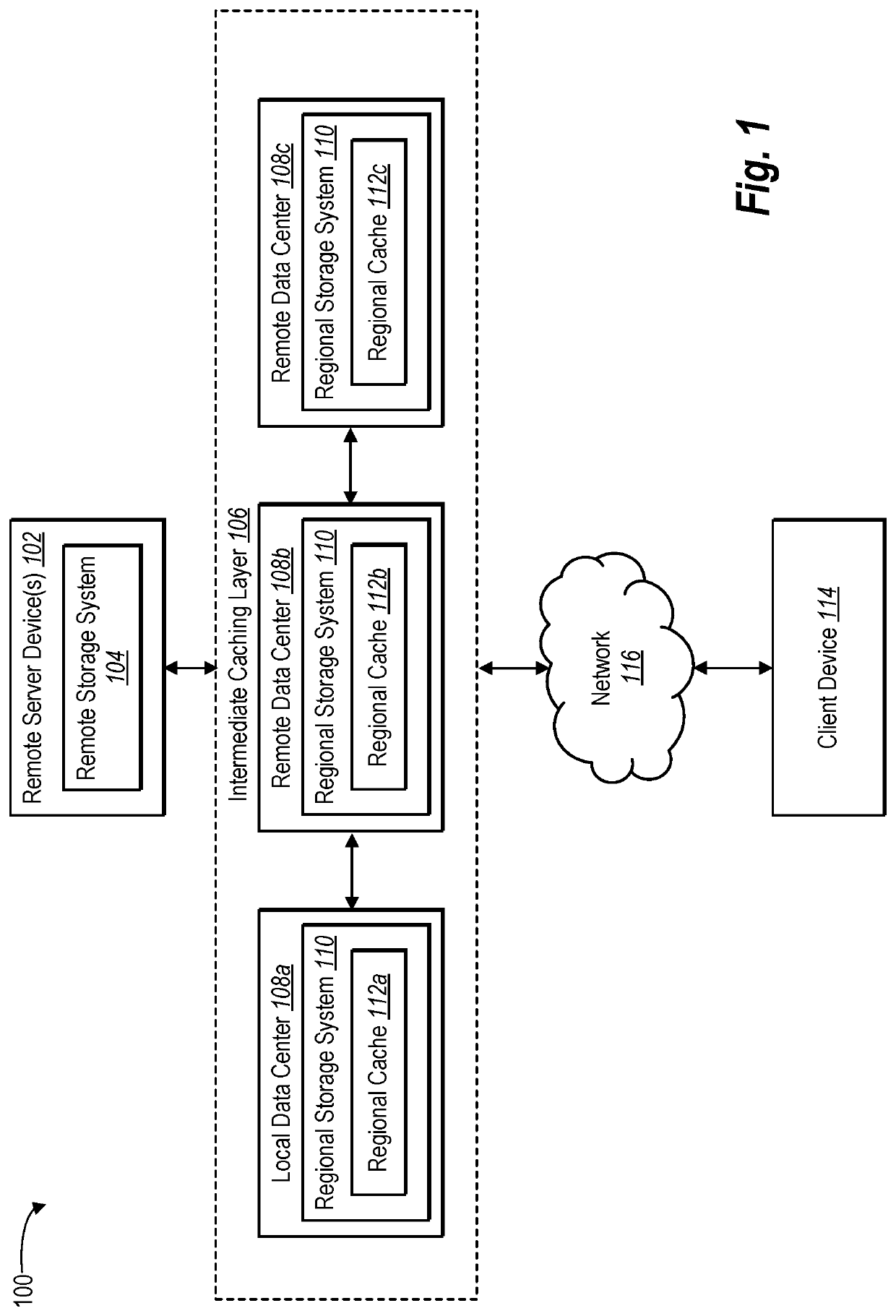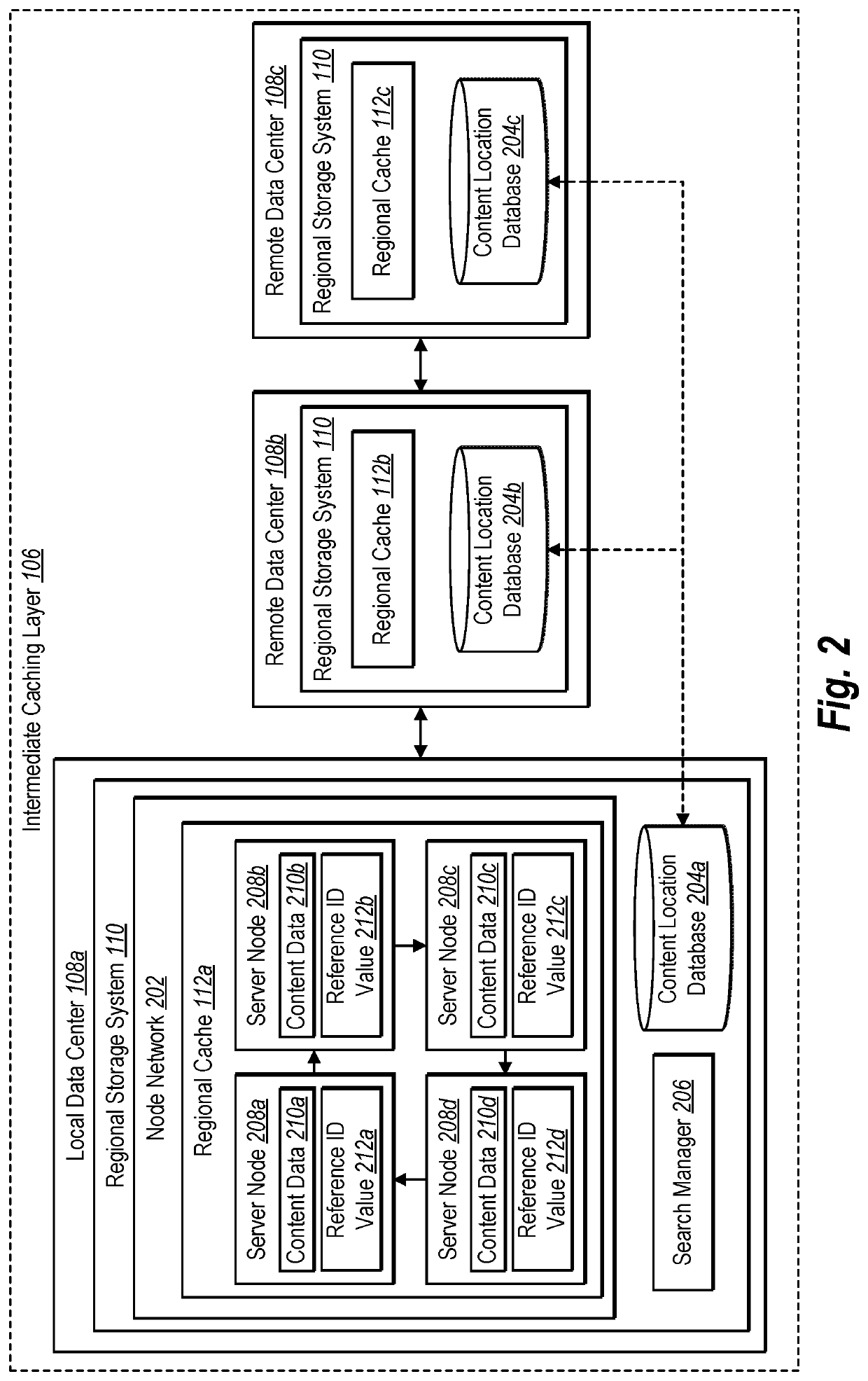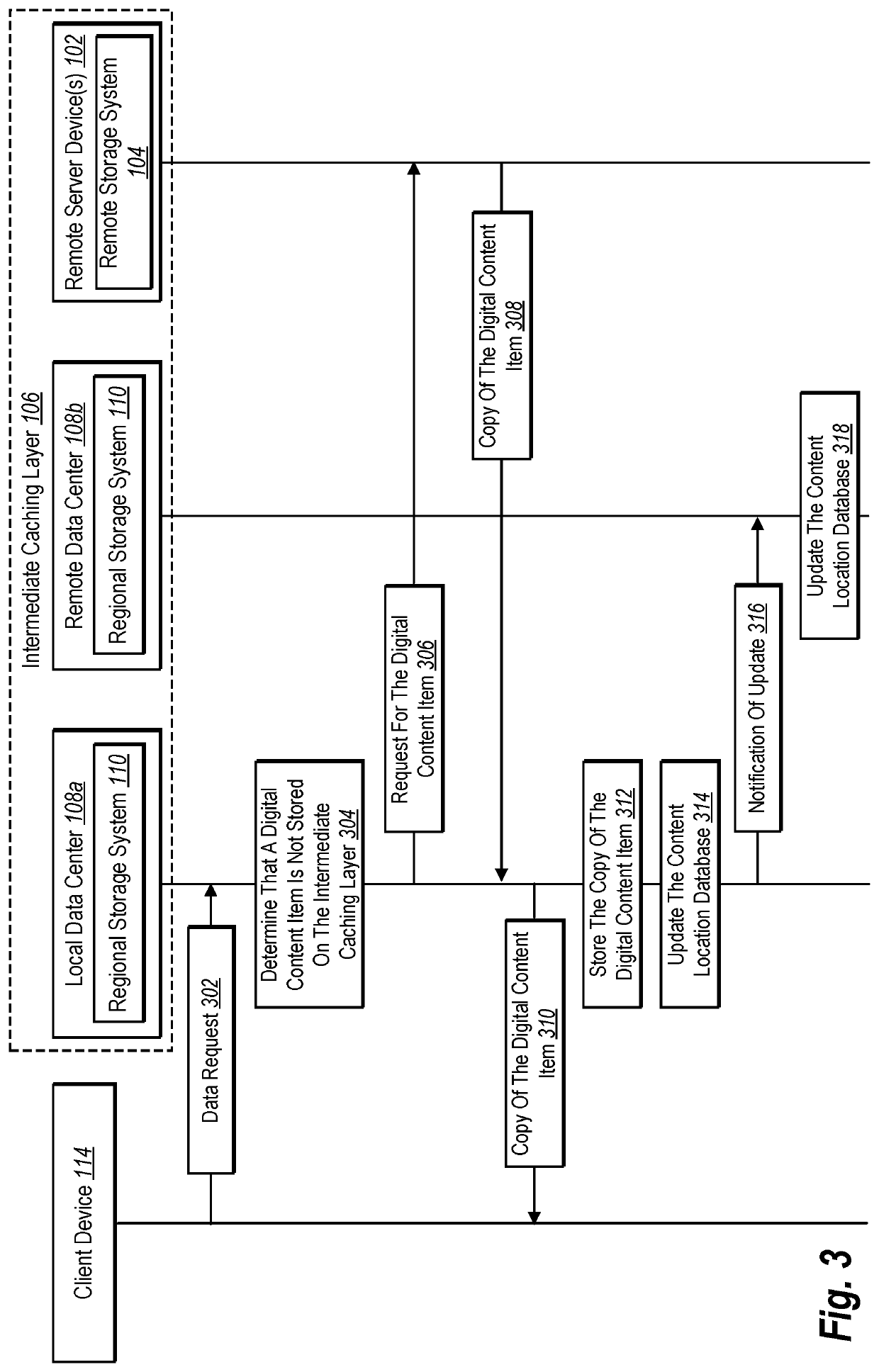Generating and providing low-latency cached content
- Summary
- Abstract
- Description
- Claims
- Application Information
AI Technical Summary
Benefits of technology
Problems solved by technology
Method used
Image
Examples
Embodiment Construction
[0020]One or more embodiments described herein provide a regional storage system that enables a user to quickly access electronic content via an intermediate caching layer while reducing a number of requests to access a remote storage system (e.g., a cloud storage system). In particular, the regional storage system generates and maintains a regional cache on a data center including a subset of digital content items from a collection of digital content items stored on the remote storage system. The regional storage system receives a data request including a reference identifier, identifies a digital content item corresponding to the data request, and, determines, based on the reference identifier, whether a copy of the digital content item exists on the intermediate caching layer. If the regional storage system fails to identify the digital content item on the intermediate caching layer, the regional storage system accesses the digital content item on the remote storage system and ad...
PUM
 Login to View More
Login to View More Abstract
Description
Claims
Application Information
 Login to View More
Login to View More - R&D
- Intellectual Property
- Life Sciences
- Materials
- Tech Scout
- Unparalleled Data Quality
- Higher Quality Content
- 60% Fewer Hallucinations
Browse by: Latest US Patents, China's latest patents, Technical Efficacy Thesaurus, Application Domain, Technology Topic, Popular Technical Reports.
© 2025 PatSnap. All rights reserved.Legal|Privacy policy|Modern Slavery Act Transparency Statement|Sitemap|About US| Contact US: help@patsnap.com



